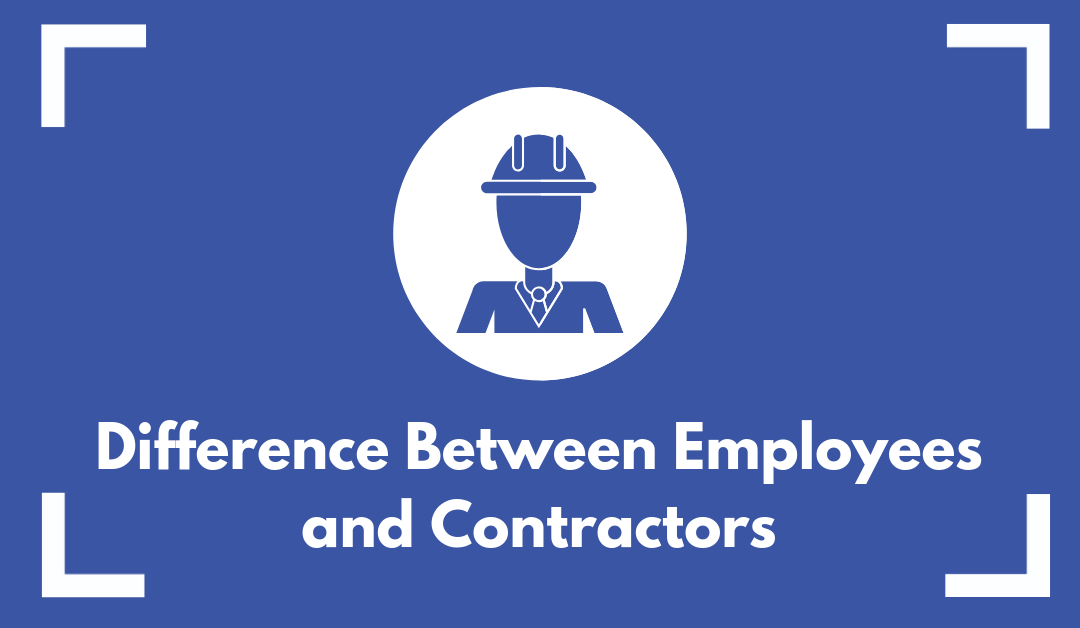Difference between Employee and Contractor

Characterizing your laborers effectively is significant for your business’ funds as well as for lawful risk. Business and work laws influence various sorts of laborers in various manners, and they are likewise burdened in various manners that define the difference between employee and contractor.
What’s a representative?
The IRS ordinarily expect laborers are representatives except if expressed something else. Representatives are laborers who are paid as salaried or hourly and might be dependent upon extra time. They’re burdened dependent on their salary and as a business.
You should retain government personal assessments, state annual charges and FICA charges (Social Security and Medicare) from them. They get a W-2 structure from the business demonstrating their yearly salary consistently in the wake of rounding out a W-4. On the off chance that you have representatives, your business should likewise make finance and FICA charge installments.
Representatives by and large get preferable treatment under work laws over temporary workers. For instance, state law by and large requires bosses convey laborers’ remuneration protection to repay representatives harmed at work. Businesses for the most part should convey joblessness protection. Businesses must maintain the Fair Labor Standards Act and the Department of Labor’s guidelines on additional time. In certain states, workers must be qualified for take feast and rest breaks during shifts. Temporary workers don’t get these advantages.
What’s a self-employed entity?
A self-employed entity is a laborer outside of the business. They are “free” which means they may maintain their own business or additionally accomplish work for at least one different organizations. A temporary worker is recruited by an organization to perform explicit work for the business. Normally, a temporary worker is given a discrete venture or set of errands to finish with negligible direct oversight.
Contractual workers don’t must have government or state personal expenses or FICA charges retained from the sums paid to them. Self-employed entities are liable for the entirety of their own personal charges, including independent work charges. They round out a W-9 and get a 1099 structure from the business indicating the aggregate sum they’ve been paid by the business consistently if the installment sums over $600.
On the off chance that you have temporary workers, you don’t really need to make installments for FICA charges. Numerous business and work laws additionally don’t have any significant bearing to self-employed entities, yet they do make a difference to representatives.
The most effective method to recognize the two
The IRS, DOL and the courts each have a test for deciding if a laborer is a temporary worker or a representative. Per the review gave by the IRS, there are three principle rules to help recognize whether your laborer is a worker or a contract based worker:
Behavioral: Does the organization control or reserve the privilege to control what the specialist does and how the laborer does their activity?
Financial: Are the business parts of the specialist’s activity constrained by the payer? (These incorporate things like how laborer is paid, regardless of whether costs are repaid, who gives apparatuses/supplies, and so on.)
Type of Relationship: Are there composed agreements or worker type benefits (for example annuity plan, protection, get-away compensation, and so on.)? Will the relationship proceed and is the work played out a key part of the business?
Organizations must gauge every one of these components while deciding if a laborer is a worker or self-employed entity. A few elements may demonstrate that the specialist is a representative, while different elements show that the laborer is a self-employed entity.
There is no “enchantment” or set number of variables that “makes” the laborer a worker or a self-employed entity, and nobody factor remains solitary in making this assurance. Likewise, factors which are applicable in one circumstance may not be important in another. This, obviously, is only a diagram. The genuine test is considerably more intricate.
In case you’re as yet not certain, ask yourself these inquiries:
- Does the organization control or reserve the privilege to control what the laborers does and how the specialist carries out the responsibility?
- Are there composed advantages for the specialist like an annuity plan, medical coverage, taken care of time or excursion pay?
- Is the specialist paid a predictable, set measure of cash for their administrations?
- Does the organization oversee how the specialist is paid, repay for costs or give apparatuses or potentially supplies?
- Does the specialist fundamentally accomplish their work in tie’s business environment?
- Is the relationship thought to be lasting?
On the off chance that the majority of the appropriate responses are truly, almost certainly, the specialist being referred to is a worker. On the off chance that you’d prefer to speak more about the distinctions, get in touch with us. Note that misclassified workers can make a business subject for upheld business charges, charge punishments, sponsored additional time and conceivably polite cures. For additional on misclassification issues, you can likewise look at this infographic by the DOL.
It’s basic to recall this: in light of the fact that an agreement says a laborer is a self-employed entity doesn’t imply that they are. The IRS, DOL and the Courts will take a gander at the real connection between the gatherings, not simply the agreement.